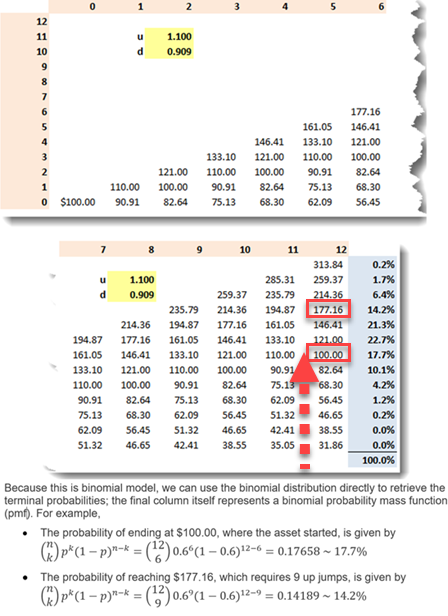Raj Sachdeva
New Member
@David Harper CFA FRM - David, could you please explain how you arrived at values of k as 6 (prob. of ending at $100) and 9 (prob. of ending at $177.16)in following example noted in the Study notes (Chapter 3: Common Univariate Random Variables, pg.6)?


Last edited by a moderator:


